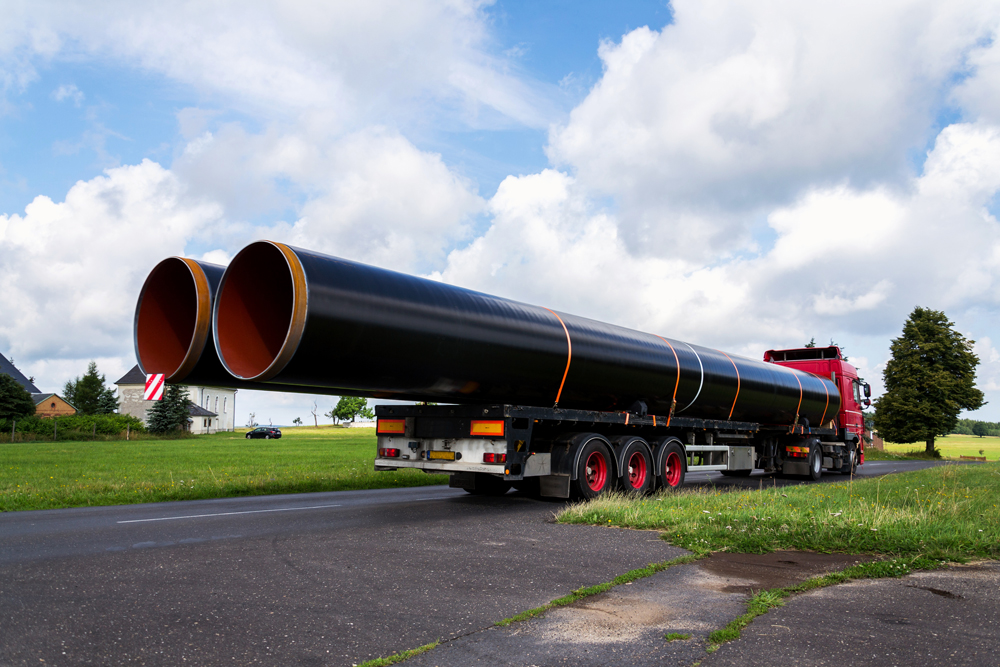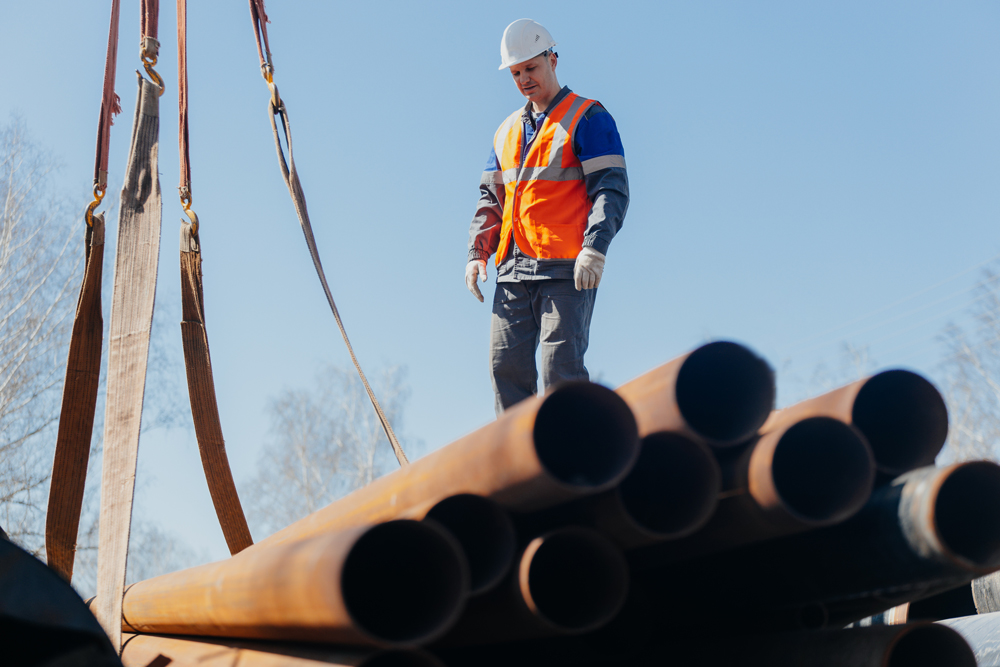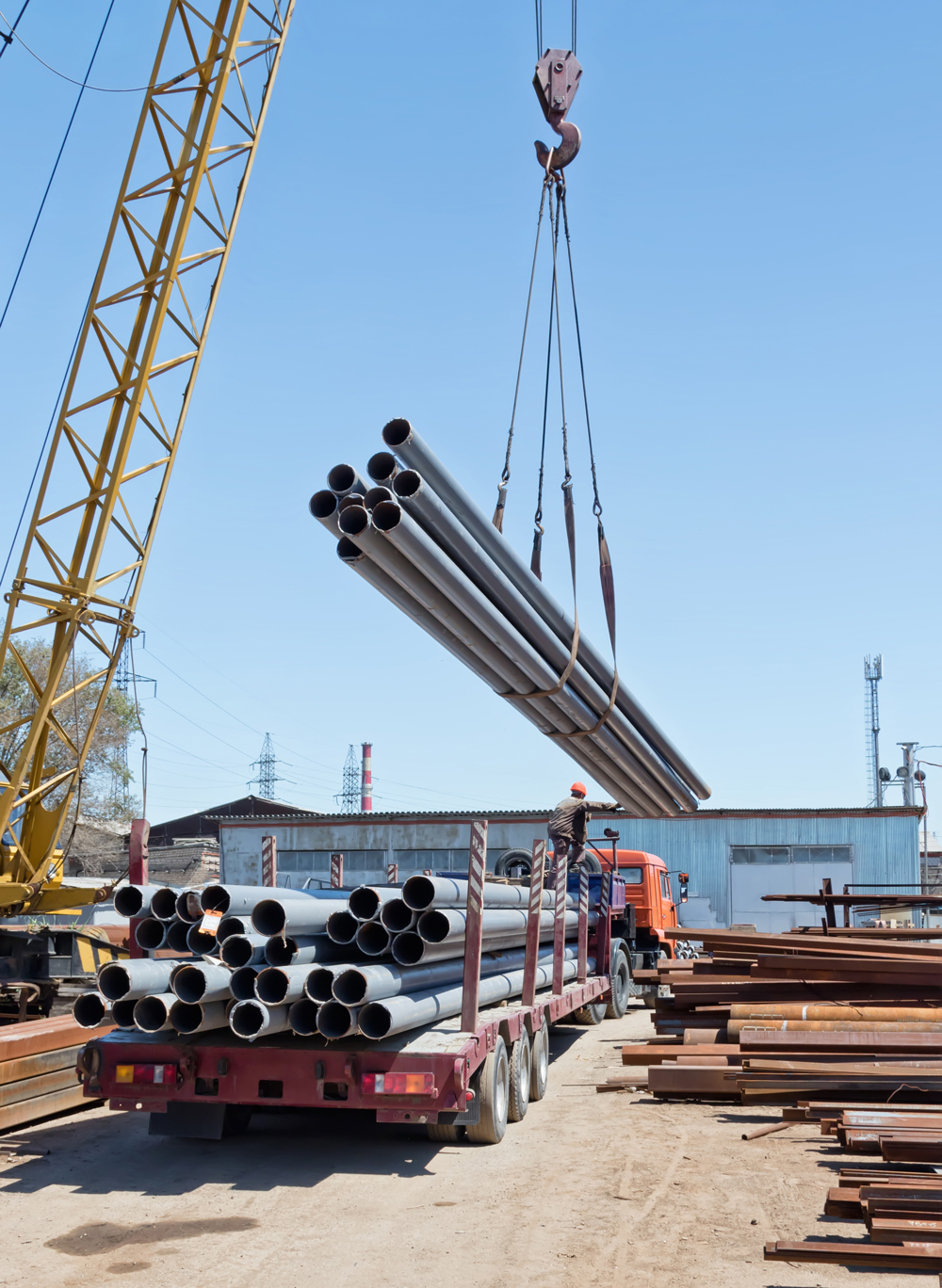January 2023, Vol. 250, No. 1
Features
Supply Chain Woes Loom Large for Oil, Gas Sectors

By Richard Nemec, P&GJ Contributing Editor, North America
(P&GJ) — In the fall of 2022, the Chicago-based Association for Supply Chain Management (ASCM) joined with the respected global accounting and consulting firm KPMG International to create an index for measuring the sustainability of the global supply chain, accompanied by a report that included some sobering conclusions. It summarized the past two years as producing a doubling of the stress level on global supply deliveries.
The report listed a number of contributors to the worsening situation, including a steady stream of disruptions, risks and regulations. The association/KPMG assessment predicted that there would continue to be increased supply chain disruptions for the foreseeable future.
“Crisis mode has become the ‘new normal,’” said ASCM CEO Abe Eshkenazi. “What we’re seeing is that ongoing market volatility continues to impair supply chain performance. [This] is why there is a need to not only improve service, cost, and inventory, but to stabilize [them]. And when it comes to creating resilient supply chains, one thing we do know – and have confirmed with [our new] index – is that talent makes the difference. If we’re going to solve this, we need the right people.”
After returning from separate talks with energy officials in South America and the Middle East in mid-November, ASCM’s Executive Vice President Douglas Kent underscored what he hopes is the macro value of the work with KPMG on the index and report, showing that the U.S. supply chain is “twice as fragile as it was just two years ago.”
Kent is convinced there is no possibility of eliminating supply chain problems, so it is a matter of taking proactive steps to mitigate the problems.
“We’re going to be hit with multitudes of demand and supply disruptions,” he said. “This doesn’t show any signs of weakening.”
Kent sees the new stability index as showing that the major concerns are related to fulfillment, or transportation, and fulfillment contributes “about 65% of the stability concerns with the supply chain,” he notes. “When transportation becomes more expensive, companies oftentimes try to find alternative ways to deliver products, and we end up with capacity shortages and things of that kind. That is exactly what has happened recently.”
This is new, he thinks, because before the pandemic transportation wasn’t a major concern in the supply chain processes. “This should be a real eye-opener for all of the [energy] industry.”
Early in 2022, the Biden administration weighed in, asserting that it was going to try to address long-term supply chain resilience concerns in the broader economy, including the oil and gas sector.
The president announced new supply chain policies focused on rebuilding domestic production and innovation, supporting workers, leveraging federal spending, strengthening trade rules and enforcement, and collaborating with U.S. allies. Longer term, analysts expect more attention to be paid to the domestic and North American supply chains.
The U.S. Energy Information Administration (EIA) has not issued a specific report on supply chain issues, but EIA officials point out that the federal agency always calculates how input costs affect production, and it certainly considers that when making periodic oil and natural gas production forecasts. Early in 2022, EIA separately reported reduced capital expenditures by U.S. oil companies despite higher crude oil prices, and increased oil shareholders returns among increased operating costs.
“Although rising crude oil prices have increased revenues, supply chain issues and financial losses from hedging contributed to increased costs,” EIA’s report noted. “Production expenses such as the cost of goods sold, operating expenses, and production taxes totaled $28.06/boe in the first quarter of 2022, 59% above the pre-pandemic average and the most in the last five years. Cost of goods sold, which includes the cost of materials and labor directly used in production, are now more than double the pre-pandemic average.”
Kenneth Medlock III, senior director of the Center for Energy Studies in the Baker Institute at Rice University in Houston, spends a lot of his time churning through various arcane energy issues, including the supply chain conundrum, such as the delays created in hydraulic fracturing (fracking) sand, steel, and labor supplies.
“As far as I know though, these delays are not severe, but they have resulted in cost inflation,” Medlock told P&GJ. “Most of this is transitory, so the supply chain issues will work themselves out. I am not aware of a major project that has been delayed. Most of what I have heard discussed is related to field level activities.”
Noting that several of the research Fellows in the energy center have followed the supply chain issue closely, Medlock indicated that the supply chain problems have “certainly impacted investment at the margin,” while recognizing that individual company-level emphasis on returns to attract investors back into the sector is still the bigger story.
“Especially after the dismal [returns] performance of the last decade, topped off by 2020, the emphasis on returns has engendered capital discipline, which is reinforced by a heightened focus by firms on their environmental performance – something investors are keen to see,” he said. “In effect, the cost of capital into the sector is now higher, due to ESG [environment-societal-governance] concerns coupled with poor recent historical performance, which will lead to a different pace of activity. This very basic point is simply missed in a lot of the ongoing discussion … if you make it more difficult for an activity to attract capital, the returns to capital in that activity will rise due to the lack of investment, and the returns will have to remain high to maintain capital inflow. This is elementary in corporate finance.”
Early in 2022 the head of the Independent Petroleum Association of America (IPAA) issued strong warnings about the continuing global supply chain problems, saying that they come at a time when more U.S. domestic energy production is needed to stabilize the national economy and curb inflationary pressures.
“Oil and natural gas producers face the same supply chain and workforce issues that all industries across the country are also facing,” said Jeff Eshelman, CEO of the IPAA, noting that the impacts from the 2020-22 pandemic have been felt widely, including the oil and gas industry. “There are currently months-long delays on securing the steel pipe and casing needed for drilling. Not only can a well not be drilled without adequate pipe, but the steel casing is a critical component to prevent environmental impacts as the World Steel Association’s annual report has forecast.”
Eshelman, in 2022, thought supply chain shortages were still disrupting the global steel market, preventing a stronger economic recovery, and he expects the negative situation to continue through 2023.
The U.S. steel industry with a 2022 value of $180 billion will continue to see steel prices rise, Eshelman predicted. “It’s not just materials to drill that have become harder to acquire. The transportation sector has been hit especially hard by workforce shortages and increased fuel prices,” he noted, citing the American Trucking Association CEO Chris Spear’s letter to President Biden:
“The trucking industry is the backbone of the American economy, moving 73% of our nation’s freight, or 10 billion tons of goods annually. Our ability to do so on a cost-efficient basis for our customers throughout the supply chain depends on certain economic conditions, including fuel prices, which are typically a fleet’s second highest operating expense. Right now, escalating fuel prices are driving up the transportation cost of all goods, adding yet another layer of inflationary pressure on every sector throughout the entire economy.”
Global professional services giant Accenture published a report on the energy sector’s struggles with the supply chain, concluding that 82% of energy companies experienced moderate to severe disruptions in 2020.
“Since then, the pandemic, the war in Ukraine, and inflationary pressures have amplified the urgency to tackle their supply chain networks problems,” indicated Accenture analysts, adding that current supply chain disruptions place up to 20% of the industry’s capex growth plans at risk and add $15 or more per barrel to the break-even cost of a new well.
The company offered proposed action to reduce the risks for oil and gas operators that cover a variety of potential interruptions: extreme weather, cyberattacks, trade disputes, workforce instability, health threats, and surges in supply or demand.
“Such disruptions, many of them unforeseen, can have a significant impact on energy supply chain networks and, therefore, the profitability and predictability of energy projects,” Accenture’s report notes. “That is because supply chain network spending represents a significant portion of capex and operational expenditures for energy companies. In fact, we’ve found that supplies of goods and services can account for approximately 80% of capex spending for upstream businesses – particularly for resource-intensive drilling and completions activities.”
Broadly, the oil and gas industry is considered one of the most significant industries in the global economy, accounting for four of the world’s top 10 companies by revenue in Fortune’s 2017 Global 500 list. Oil remains the world’s leading fuel with more than 90 MMbpd produced. The industry’s three main divisions – upstream, midstream and downstream – produce, transport, process, store and market crude oil, natural gas, natural gas liquids and sulfur.
The nation’s most active production area, the Permian Basin is not aloof from the supply chain challenges. Operators are managing, but not resolving, the negative impact, according to at least one authoritative source in the New Mexico-Texas production fields.
Members of the Permian Basin Petroleum Association (PBPA) indicate that supply chain constraints continue, according to Stephen Robertson, PBPA’s executive vice president.
“Supply chain issues, whether it has to do with raw materials like steel and sand, more refined products like tubular goods, or equipment like pumps, valves and high-tech machinery, have absolutely impacted operations in the Permian Basin,” Robertson said. “And, from what I understand, these issues continue to impact operations, planning and execution. These constraints have been another upward pressure on costs, meaning that even though crude oil and natural gas prices are high globally, it hasn’t necessarily been a boon to margins.”
In another robust production area in North Dakota’s Williston Basin where the Bakken Shale has thrived for more than a decade, the supply chain interruptions have worsened a continuing labor shortage, according to state oil and gas officials.
In October, there were up to 20,000 job openings in the state, based on reports from North Dakota’s chief oil and gas regulator Lynn Helms, director of the Department of Mineral Resources. Helms noted that there were only 15 well completion crews and even fewer hydraulic fracturing crews operating in the Bakken in the fall of 2022.
North Dakota's midstream sector also has not been immune to the supply chain challenges that have been experienced in every corner of the state’s economy, according to Justin Kringstad, director of the state Pipeline Authority, who added that the situation was “largely manageable” with adequate planning and procurement practices. “The inflationary pressures on steel materials and construction energy inputs [diesel] have been particularly challenging over the past two years as companies work to address a number of challenges related to growing natural gas volumes.”
In late October, Kringstad indicated that inflationary pressures had “largely plateaued for the time being but are still front and center in discussions.”
- Paul Dittmann, the executive director, Global Supply Chain Institute at the University of Tennessee, Knoxville, has opined that it is impossible to eliminate supply chain risk, but it is still something that can be planned around to some extent.
“Having a risk management plan can even be used as a competitive advantage, since so few firms have one,” Dittmann said. “Preventing disruptions down the supply chain dramatically impacts competitiveness in general. The repercussions of supply chain disruptions reach far and can devastate a company’s financial health. An effective risk management process for the supply chain can help companies avoid missed customer commitments, stock outs, reduced earnings, higher inventory levels, increased time-to-market cycles, reductions in product quality, and negative impacts to brand perception.”
A software service provider with a platform for creating an integrated supply chain, Dallas-based o9 Solutions, has closely tracked the impacts of supply chain malfunctions on the oil and gas sector as it works with various clients across the hydrocarbon value chain, including ExxonMobil, enabling digital transformation of planning.
“We provide the platform to bring all of the commercial, sales, and operational planning processes under one roof,” said Usman Khan, senior director for the oil and gas industry. “It is based on the human brain concept, creating real-time knowledge models on a very sophisticated digital twin of the supply chain network.”
Among the super-majors, ExxonMobil and Chevron Corp. have applied innovations to help mitigate the supply chain impacts. In Exxon’s case it has developed a 4-year-old global projects organization that integrated what the company describes as “decades of mega-project management experience, deep technical knowledge, and commercial capabilities into one global team” to deliver $125 billion in projects across its upstream, downstream, and chemical businesses over the span of a decade.
ExxonMobil officials cite the example of an ethane steam cracker and derivative products project near Corpus Christi, Texas, as a beneficiary of the integrated project organization’s concentrated expertise.
The joint venture project incorporates the chemical organization’s operational experience, customer focus, supply chain, and technology expertise, with the oil giant’s upstream megaproject and modularization capabilities. The facility is ExxonMobil’s first fully modularized chemical plant, with fabrication of more than 140,000 tons of mega modules that began commercial operations in 2022.
At Chevron, the global fossil fuels giant avoided expected supply chain-related delays in the development of its proposed $54 billion Gorgon natural gas export project in Australia. In response to sputtering supply chain operations, Chevron’s Gorgon project team sought outside help from a third-party local Western Australia firm, AdditiveNow, to manufacture some critical parts through 3-D printing technology.
The products failed to make it to the construction site on time, but Chevron acquired the intellectual property for future use, given the manufacturing specifications developed by AdditiveNow. Chevron is accelerating 3-D printing research and development efforts by a year as a result, the company divulged.
Chevron executives told the Wall Street Journal that the Gorgon experience taught the company a lot, namely that the so-called “flexible, right-part, right-time digital supply-chain approach” can work. As was noted in the WSJ report, 3-D printing, or additive manufacturing, can be an important tool.
It and other moves can help overcome an average cost of unplanned downtime for Gulf of Mexico oil and gas operators at about $20 million annually, rising to $50 million for larger operators, according to calculations by Energy and Industrial Advisory Partners LLC.
At Rice University’s energy center, a Fellow specializing in global oil, Mark Finley, notes that the Federal Reserve Bank in Dallas in the first half of 2022 asked oil and gas companies about how broadly the supply chain problems’ impact has been for the regional Fed’s quarterly report in June.
At that time 94% of U.S. companies responding to the survey said that supply chain issues were negatively impacting their business (either “slightly” or “significantly”) with 66% expecting that it will take more than a year to resolve these issues. “Moreover, the difficulties were broadly spread across key inputs – personnel, steel, sand, equipment, and chemicals,” Finley said.
Finley told P&GJ that a case can be made that the sharp increase in oil and gas prices in 2021-22 was due to global demand for goods and services expanding post-COVID more rapidly than the supply chains could keep up, and further exacerbated by Russia’s invasion of Ukraine that has redirected global oil and gas flows, policies like China’s COVID-related shutdowns, and U.S. trade protection actions. Finley thinks that for the future domestic U.S. supply chain issues will capture more attention as will the rising operating costs throughout the sector.
“It is reasonable to expect a growing focus on domestic supply chains for critical industries – including tech, new energy technologies like EVs, batteries, etc. – what Treasury Secretary Janet Yellen has called ‘friend-shoring,”’ Finley said. “In that case, we can expect to see a long-term redirection of supply chain focus on domestic-friendly sources, higher costs-less efficiency, and potentially slower growth in trade and lower economic growth.”
Among the analysts, researchers, industry officials and oil and gas observers, it is difficult to uncover any positive examples of supply chain management success stories.
While noting most of the examples are “what not to do,” ASCM’s Douglas Kent offers the Brazilian oil and gas giant Petrobras for its business transformations that have resulted in reduction of inventories and improvements in continuity of supply. The state-owned Brazilian global petroleum giant “has made a real strong statement,” according to Kent, who calls the multi-national a great case study for “putting the focus on how to mitigate risk and do it at the lowest possible costs.”
Executives at Petrobras knew that their maintenance repair and operations (MRO) and investment materials supply chain could be more efficient, according to Kent. “Petrobras completed some really strong transformation efforts that we have captured in a case study and certification in collaboration with our association,” he said.
The Brazil-based oil and gas company, one of the largest in the world, has a complex MRO supply chain with hundreds of thousands of stock-keeping units (SKU), thousands of suppliers, and hundreds of business units.
Richard Nemec is a P&GJ contributing editor covering North America and based in Los Angeles. He can be reached at rnemec@ca.rr.com.








Comments